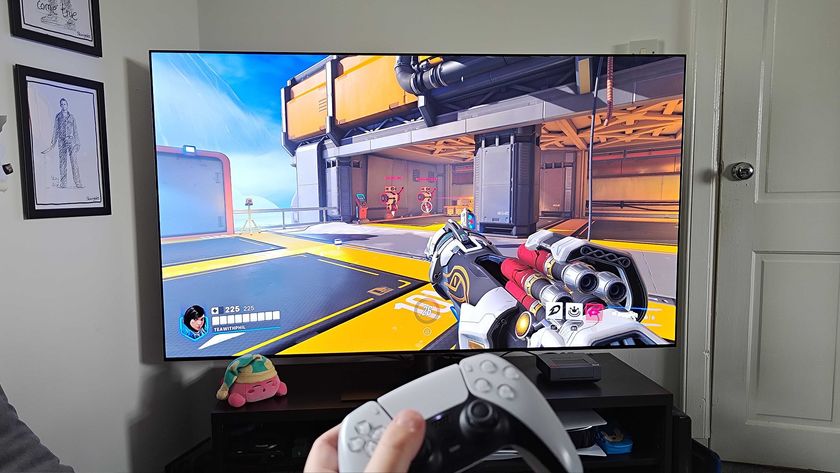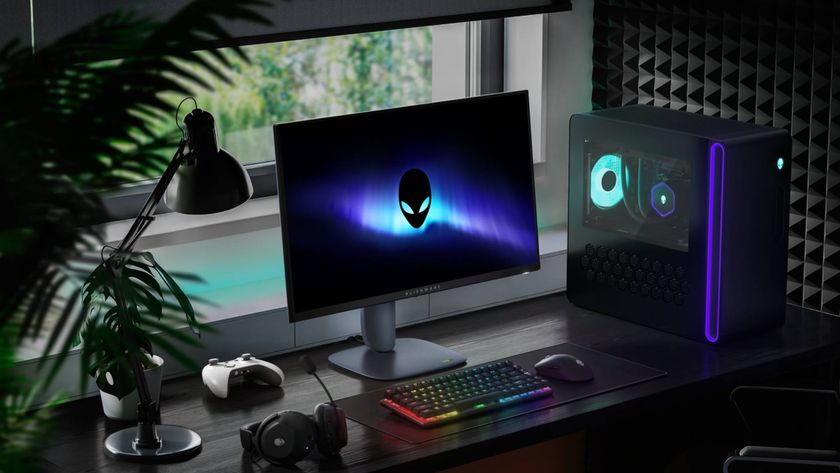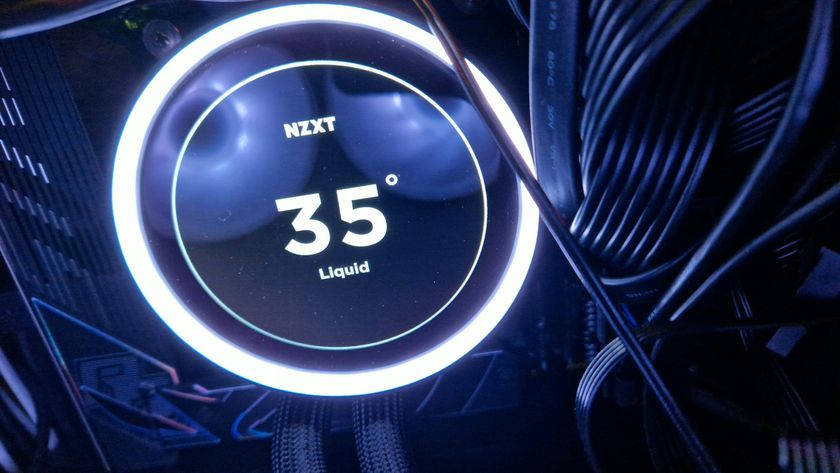12DOVE Verdict
The LG C1 is a tour de force OLED TV with state-of-the-art AI image processing, and best in class games console support.
Pros
- +
Fabulous image quality
- +
Four 4K 120Hz HDMI 2.1 inputs
- +
LG Game Optimizer
Cons
- -
You’ll probably need a soundbar
Why you can trust 12DOVE
The LG OLED C1 is the TV maker's 2021 OLED honeypot. Sure, the LG OLED G1 Gallery stablemate has a brighter Evo panel (more on that later), but it’s a high-falutin’-interiors friendly screen, rather than a display aimed directly at being the best gaming TV - we kinda think a night playing Resident Evil Village would freak it out, let alone us.
The C1 is the more realistic choice, perhaps. Available in a range of screen sizes, including a 48-incher suitable for close-quarter viewing, it’s powered by a razor-sharp AI picture engine and sports LG’s freshly baked Game Optimizer menu, a one-stop-shop for all aspects of gaming sound and vision.
The C1 also uses the all-new LG webOS v6.0, complete with full-screen display, has an OTT larder overflowing with streaming apps, and comes with comprehensive catch-up TV services and apps too.
So is this the best OLED TV dream screen next-gen gamers have been waiting for?
Features & Design
It’ll surprise no one to learn that the C1 is wondrously thin in its design. The panel expands only to accommodate electronics, sound system, and input board, and even then it's not by much. The panel sits on a central pedestal. However, this requires a three-quarter wide trim to keep it standing upright. It looks nice enough, but you’ll not want to sit a soundbar right in front of it, even purely from an aesthetic point of view.
HDMI connectivity is leading edge as all four HDMIs are v2.1, which means they’re compatible with a 4K at 120Hz display output by the PlayStation 5 and Xbox Series X. There’s support for VRR (Variable Refresh Rate), NVIDIA G-Sync, and AMD Freesync, as well as ALLM (Auto Low Latency Mode). Naturally, we get eARC too, used to route audio from the TV to a soundbar or best surround sound system.
Additional connections include three USB ports, a digital optical audio output, and Ethernet, while wireless connectivity comes via Wi-Fi, Bluetooth, and AirPlay 2.

The C1 ships with LG’s slimmed-down Magic Remote control. Functionally it’s the same cursor pointer we've used before; but it just sits a bit more comfortably in the hand. There are dedicated buttons for Netflix, Prime Video, Disney+, and Rakuten TV, so a binge is only ever a button press away.
Naturally, we made a beeline for the new Game Optimizer menu. This allows easy access to gaming-specific features, so you can easily manage brightness and VRR settings. We particularly like the Game Genre selector. This applies specific picture processing to suit different game styles, effectively optimising the TV for FPS, RTS, and RPG titles. Combine this with the HDMI 2.1 connectivity, and game-focused features and this really is pushing for the mantle of best TV for PS5 and Xbox Series X and best 120Hz 4K TV.
It’s particularly helpful on fast-moving action games, lifting gamma so you’re less likely to be sniped unseen from the shadows. With the RPG mode selected, you get a more 'contrast-y' picture, while RPG just lifts the average picture level for greater clarity. The C1’s latency performance is also very good: we measured input lag at 12.6ms (1080/60) with Game Mode on.

Performance
So just how well does the glass in the C1 compare to LG’s flagship Evo panel? As it happens, remarkably well. There’s really not a huge gulf between the two when it comes to HDR peak brightness and for the most part, the screens look very similar.
The driving force here is LG’s 4th Gen Alpha 9 image processor, which does a phenomenal job. AI has a big role in the C1’s picture armory as just switching off AI image enhancement results in a significant drop in texture and detail. Colour banding has been largely eradicated by AI. Improvements in Dynamic Tone mapping have also led to much smoother gradations, which makes all picture content look more 'filmic'.
Standard, Vivid (perhaps surprisingly), and Cinema Home with Dolby Vision content are our favourite presets when watching TV and movies. They combine a realistic average picture level, with splendid colour saturation and punchy contrast that can easily rival the best QLED TV contenders.
Cinema Home is actually a Dolby Vision IQ setting. This means the TV’s ambient light sensor is being employed to monitor lighting levels in your viewing room, and it adjusts Dolby Vision content appropriately, to prevent over-darkening.

The set’s HDR performance is on the right side of impressive. We measured peak brightness at around 750 nits using the Standard image present, and a five percent measurement window. HDR support covers Dolby Vision, HDR10, HGiG, and HLG. There’s no support for HDR10+, even though it remains the preferred dynamic metadata standard for Amazon Prime Video.
AI processing also plays a role when it comes to audio. The C1’s AI Sound Pro mode upscales stereo and 5.1 content, resulting in a surprisingly rich performance. The set has a Dolby Atmos decoder, although there’s not a lot it can do with the immersive codec. Total power output is rated at 40W, which means the set isn’t short of shouty volume.

Overall - should you buy it?
The LG OLED C1 arrived with a lot to live up to. Its predecessor, the CX from 2020, became a hot buy for gamers and we think the C1 will be just as popular. Indeed, the addition of the Game Optimiser mode, alongside ALLM and VRR, takes the level of customisation available on this TV to another level. So, if you want an OLED telly that takes gameplay seriously and boasts class-leading console support, then the answer to the above question has to be a resounding ‘yes’.
The provision of four HDMI 4K 120fps inputs, to make the most of those PS5 and Xbox Series X titles that support the display format, gives the screen an edge over rival 2021 modules that limit the number of compatible inputs.
Ultimately though, it's the screen's image quality that really sells it: the LG C1 is simply a phenomenal-looking 4K TV.
Steve May is a home entertainment technology specialist. Creator of Home Cinema Choice magazine, Steve writes about gadgets and gizmos for GamesRadar, T3, Louder Sound, TechRadar, Home Cinema Choice and Yahoo. He’s also the editor of The Luxe Review and Pro AV site Inside CI. Steve once wrote a games column for legendary British comic 2000AD (and has a badge to prove it), and maintains that when it comes to top shooters, Doom is the GOAT.

























